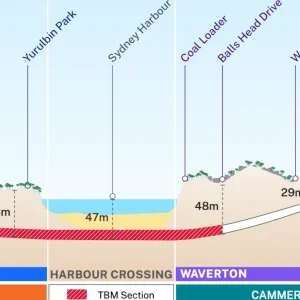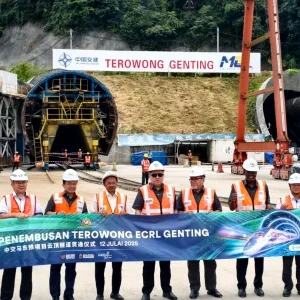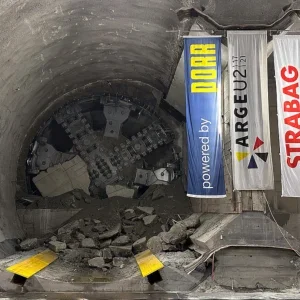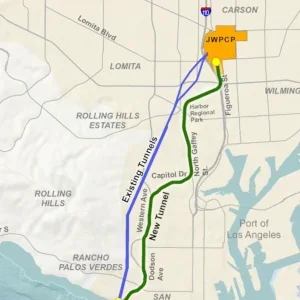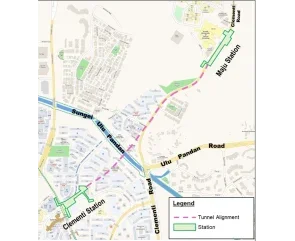
Sinohydro Corporation Ltd (Singapore branch) will undertake the design and construction of tunnels between Maju station (CR16) and Clementi station (CR17). The contract, valued at around S$199m (£117.5m) completes LTA’s appointment of contractors for the nine civil contracts for CRL2.
LTA says Sinohydro Corporation has a strong track record in both local and overseas infrastructure projects. The company constructed Napier station on the Thomson-East Coast Line and is currently involved in the construction of CRL Phase 1 Pasir Ris East station, and the construction of CRL2 Clementi station via a joint venture.
The twin bored tunnels, each extending 1.4km between CR16 and CR17, will be constructed beneath key infrastructure such as the Sungei Ulu Pandan canal. As the geology is predominantly hard sedimentary rock, a slurry TBM will be used.
Construction works are expected to start in the fourth quarter of this year and passenger service for CRL Phase 2 is targeted to commence in 2032.
A separate contract, valued at around S$400m (£236m), has been awarded to Siemens Mobility Pte Ltd and Concord Corporation Pte Ltd Consortium for the design, supply, installation, testing, and commissioning of the power supply system for the CRL.
Besides the 66kV and 22kV AC systems, the traction power supply system will also be designed for 1500V DC to meet the operational requirement for the high-capacity CRL.
The CRL is Singapore’s eighth MRT line. It will serve existing and future developments in the eastern, north-eastern and western corridors, linking major hubs such as Jurong Lake District, Punggol Digital District and Changi region. Almost half of its stations will have interchanges with other rail lines.
It is being constructed in three phases. Announced in 2019, CRL Phase 1 is 29km long with 12 stations. Construction works have commenced and are targeted to be completed by 2030. CRL Phase 2, announced in 2022, is approximately 15km and has six underground stations. Engineering studies for the CRL Phase 3 are ongoing.



